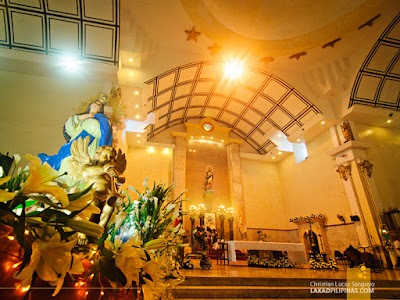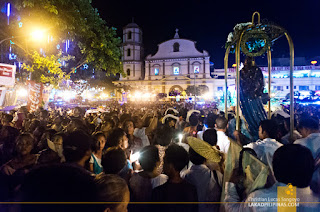Pontevedra
Pontevedra is a 3rd class coastal municipality located on the eastern part of Capiz Province.It is bounded on the north by the town of Panay and the Jintotolo Channel,on the east by the town of President Roxas,on the south by Maayon, and on the west by Panitan.It has a total land area of 133 square kilometers and is politically subdivided into 26 barangays(6 coastal and 20 upland).
Main source of livelihood is fishing and farming.The production and processing of Bangus or milkfish is the town's One town One Product commodity. Every 15th day of May each year,the town celebrates the Guyum-guyuman Festival showcasing the unique culture of the town's people especially the Guyum Tribe.
History
In 1853, the town Pontevedra was established at the present site of Barangay Sublangon. Formerly this town was a part of Panay, being the first settlement in the province of Capiz. Only in the year 1853 when General Crespo passed a decree making it independent town from Panay. Three years after, the town leaders decided to transfer the Poblacion to its present site because of the accessibility to the mouth of the big and navigable Agbalo river. The natives of the town call the place “Caguyuman”, a term descriptive of the place of ants or “ant hill”. This has been so because during that time the market days of the town attracted very large number of people from neighboring town and far away places. These people came to town like swarm of ants, on foot, bullcarts in bancas and sailboats. Hence the name was “Caguyuman” The name was changed to Pontevedra when the town has its own independent parish. That was 24 years later, after the town was established through the request of General Mariones. The request was granted two years after and Father Gregorio Hermida was the first Spanish Friar to take charge of the town parish. This Spanish Friar found the stiking resenblance of the town with that of his hometown in Pontevedra, spain. Henceforth through his influences the town was named PONTEVEDRA.
Captivating Capiz-PONTEVEDRA MUNICIPALITY In history as of this present time, according to the people there, Pontevedra before known as“CAGUYUMAN” meaning a group of people. Because during the day of monday and friday time ago until now people from their defferent Barangays, are going to the market on that days. Bringing their products and exchanging for others products. Like, dried fish, fresh fish, shrimps, crabs, other sea shells and etc. The people who lived at the seas and pound’s “tubigan” exchange their products to the people who live in the farm “patag”. Like leafy vegetables, squash, beans, okra and other vegetables found in the farm here in Capiz and also different fruits like bananas, guava, jackfruit, papaya, melon and other seasonal fruits. The market will become crowded on that days, monday and friday.The municipality of Pontevedra is rich in land and agricultural resources; its relatively flat and hillylands is good for farm products from rice, sugarcane and corn. On the other hand, its coastal area produces majority of cultured-aqua products in the province. To date, Pontevedra is being identified as one of the District Agro-Industrial Centers (DAICs) in the Province of Capiz with confirmation of the Regional Development Council VI.
The Municipality of Pontevedra celebrates the “Guyumguyuman Festival during the month of May. There purpose is to promote and exhibit their defferent products and most the seafoods in their municipality.Capiz is said as a seafood capital of the Philippines and Municipality of Pontevedra is the part of it! Theres a lot of products from seas, all sea shells and big fresh fishes, crabs different kinds of shrimps octopus etc. They have also places that could attract for their visitors or tourist as well.They have many beautiful beaches that are located in defferent place in pontevedra. You ca enjoy watching the beauty of natural resources like trees, at the seas side and rivers. Pontevedra also have a beautiful and unique resort named “VILLA CONSORCIA” the located at the malag-it Pontevedra capiz.
 The Municipality of Ivisan is consider as the smallest municipality here in Capiz. And even though it is a small one, the municipality of Ivsian is also active in saving mother earth and preventing the cleanliness of the said municipality. Infact, it is also consider as one of the cleanest municipality.
The Municipality of Ivisan is consider as the smallest municipality here in Capiz. And even though it is a small one, the municipality of Ivsian is also active in saving mother earth and preventing the cleanliness of the said municipality. Infact, it is also consider as one of the cleanest municipality.








